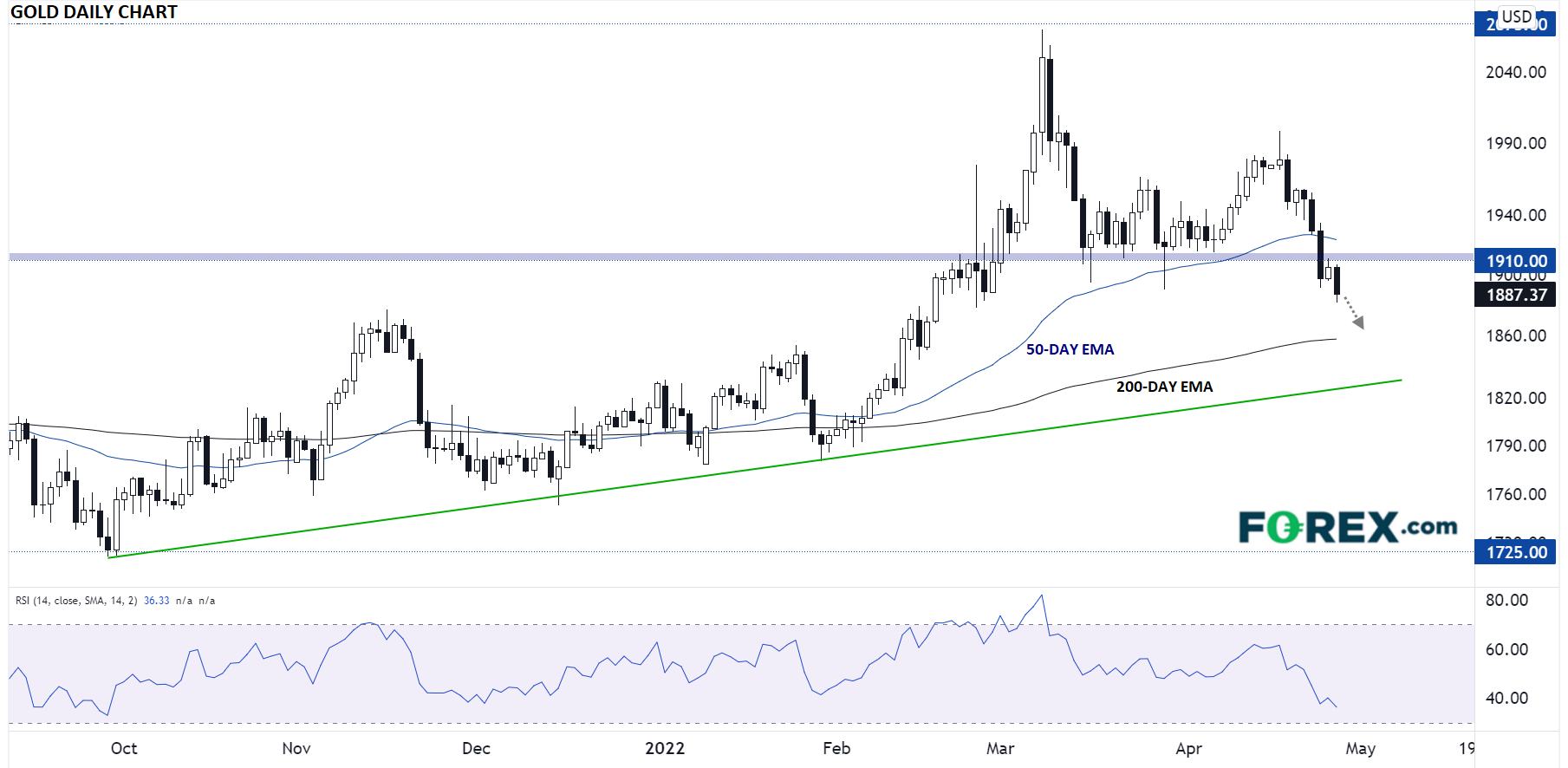The yellow metal is trading down by more than -5% since peaking near $2,000 last week and is now testing its lowest level in more than two months.
The US dollar index is rising for its fifth consecutive day as the greenback hits multi-year highs against the euro and British pound among other rivals, and traders are still digesting the implications of the ongoing surge in the world’s reserve currency.
One underdiscussed causality of the dollar’s rally is gold. While the yellow metal theoretically should be catching a bid with inflation at multi-decade highs across the globe, a military conflict with a nuclear-enabled world power, and a revival of physical demand in Asia, the buck’s strength is overwhelming gold bulls.
As the chart below shows, the yellow metal is trading down by more than -5% since peaking near $2,000 last week and is now testing its lowest level in more than two months. Tuesday’s small intraday candle marked a brief consolidation in the midst of the impulsive bearish move, and yesterday, the short-term selling pressure resumed:

Source: StoneX, TradingView
To the downside, the next areas to watch include the 200-day EMA near $1860, followed by the rising trendline near $1825. On the other hand, bulls will need to see the pair rise back above the key previous support/resistance zone around $1910 to erase the near-term bearish bias.
Finally, in terms of economic data to watch in the coming week or two, gold traders will be closely monitoring the Q1 Advance GDP report out of the US on Thursday, the Core PCE price index report on Friday, and, perhaps most importantly, the FOMC Monetary Policy Meeting next Wednesday. If we see evidence of strong growth, elevated price pressures, and a more hawkish Federal Reserve, the selling in gold may well continue.
